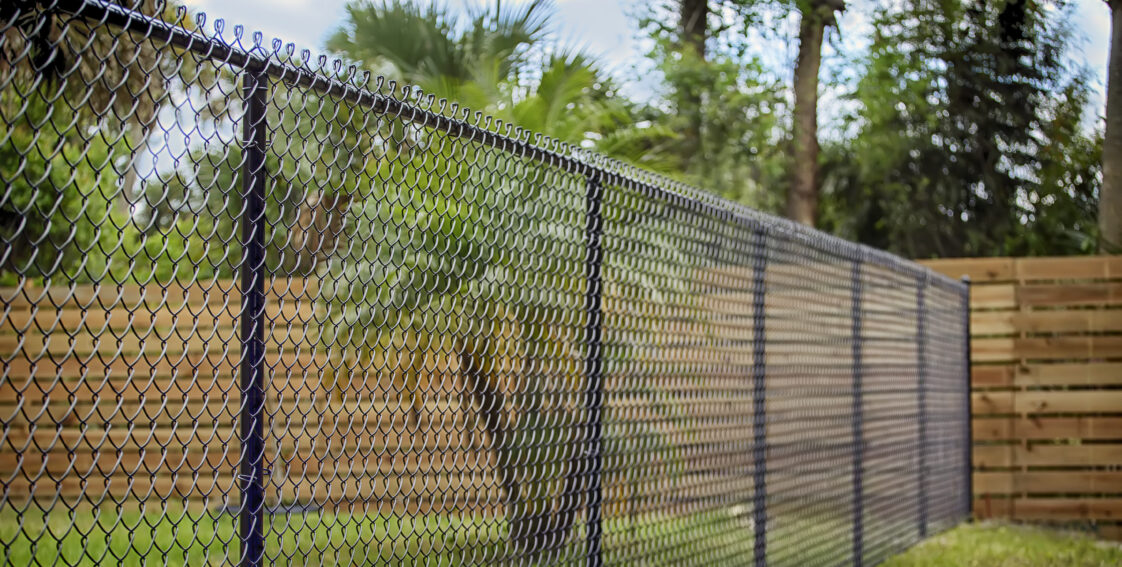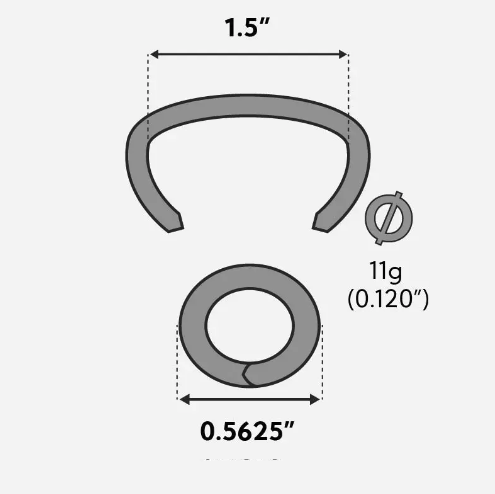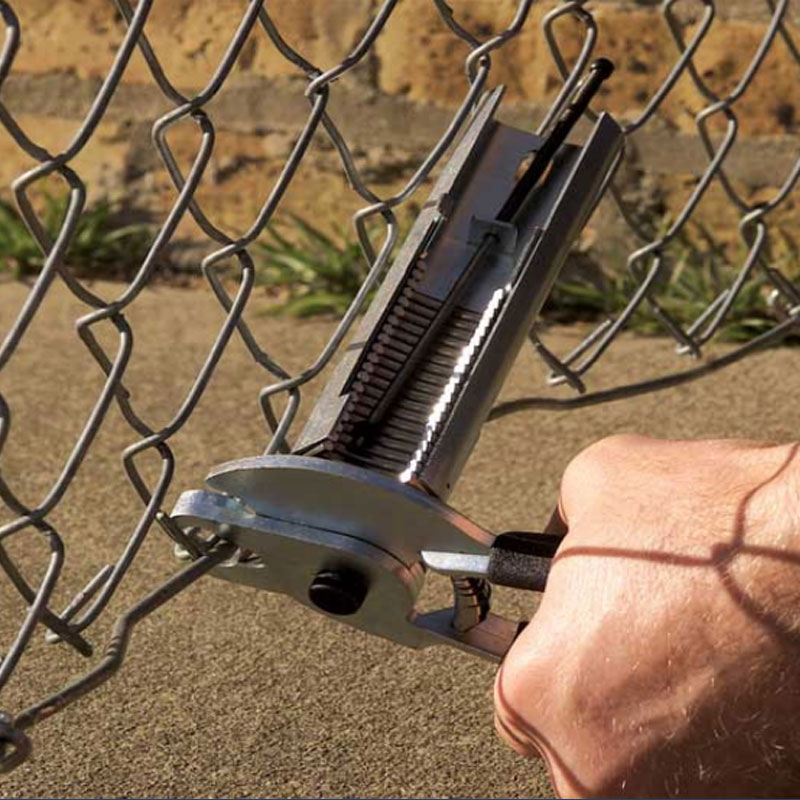
What to Know About Using Hog Rings on Chain Link Fencing
Hog rings are roughly U-, C, or D-shaped and create a ring when pressed together. They’re primarily fabricated from a heavy gauged wire and demonstrate exceptional strength. Their strength is one of the primary reasons why they’re widely used for many types of fencing, including chain link fencing. Beyond their strength, additional benefits include weather and UV resistance and easy installation.
Understanding What Hog Rings You Need for Chain Link Fencing

- Shape: C-shaped rings work better for chain link fencing because they’re more flexible, are less likely to damage or cut into the fence wire, and have better tension distribution.
- End: We recommend using hog rings with a blunt end rather than a sharp one. Sharp ends are better for fabrics or materials with no prefabricated rings or insertion points.
- Gauge/Size: A good rule of thumb is 11-gauge for common residential use and heavier-duty 9-gauge for commercial use. If you need better strength, go for the 9-gauge. As far as diameter goes, anything from 3/4″ to 1″ will suffice.
You can read this guide for more insight.
Installing Hog Rings on Fencing
Planning Ahead/Ordering Rings
Before installation, always plan ahead to know how many rings you’ll need. A good rule of thumb is one hog ring for every one foot of fencing. Measure the length of your fence and order your hog rings accordingly.
If you’re securing chain link fencing in a residential area without much wildlife, you may only need to use one hog ring per two feet because there will be fewer animals trying to crawl under your fence.
The more secure you want the bottom of your fence to be, the more hog rings you’ll need. For example, if you live in a rural area and you routinely have small varmints trying to get under your fence, we recommend installing a hog ring every six inches.
Installation Guide

Chain link fencing must first be attached to tension wires attached to posts. The top tension wire keeps the chain link taut and prevents sagging from the material’s weight. The bottom wire prevents intruders from breaching the fence by pushing it upward. Hog rings secure the mesh fencing to the tension wires.
As mentioned earlier, hog rings are very easy to install. The only downside is that they’re difficult to remove, which likely won’t be an issue with fencing. To install hog rings, follow these 5 simple steps:
- Apply the hog ring pliers so the ends of the hog ring fit into the intentions in the tool, with the opening of the ring pointed out.
- Select the point where you want to secure the fencing to the wire.
- Push the hog ring through the fencing so each end is on either side of the tension wire.
- Squeeze the hog ring pliers around the hog ring until it forms a tight circle around the fencing and wire, then release.
- Repeat every 12 inches (or whatever other measurement you’ve determined) throughout each section until the job is complete.
Professional Tip: If this is a large project, you’ll want to use a pneumatic hog ring gun instead of manual pliers. A pneumatic hog ring gun can help reduce physical stress and repetitive strain injuries. If you’ve never used a pneumatic hog ring gun before, please visit our Safety Tips Guide.
Where to Order Hog Rings
King Steel Fasteners has been one of the leading domestic manufacturers of hog rings and hog ring tools since 1995. All products are manufactured in-house and comply with our accredited quality management system. By working with us, you can ensure fast delivery, exceptional quality, custom solutions, and excellent customer support.
Please visit our website to browse our inventory or contact us today to get help from one of our experts.
